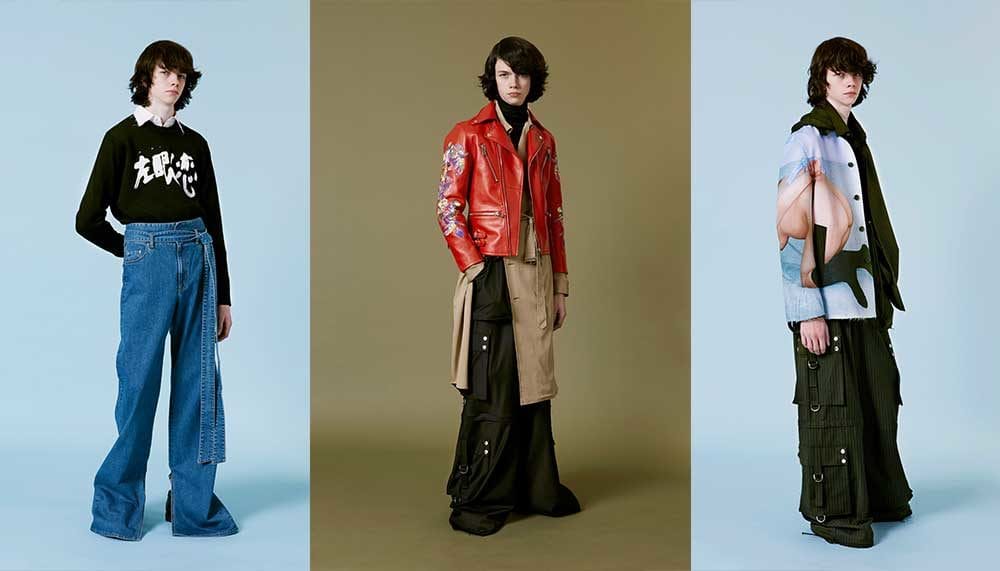Zen and the art of fashion
It was in May this year that Masanori Morikawa, the founder of Christian Dada, finally saw his vision for the flagship boutique in Singapore realised in full; the same time I met him for our interview at the new 268 Orchard. Designed by Fumiko Takahama Architects, the Zen garden-inspired space perfectly encapsulated the world of contrasts Christian Dada exists in, taking cues from the past and the present simultaneously and fusing them into something new.
The 158sqm store – Morikawa’s first outside Japan – is distinctly futuristic, with ‘rocks’ of perforated black metal sheets folded origami-style into functional shapes, echoing the characteristic minimalism of the ancient karesansui (Japanese rock garden). The concept came from Morikawa’s hometown of Kagawa, specifically Naoshima, renowned for its art museums and installations. Which is not surprising, considering the origins of the brand’s moniker.
True to the spirit of Dadaism, the anarchistic art movement, the name of the Japanese fashion label was an irreverent take on storied couture houses such as Christian Dior and Balenciaga. As a new designer, Morikawa saw the fashion industry as a systematic, hierarchical place. “He wanted to create a different type of fashion (system); a different approach," explains his general manager, Seiya Nakamura. Christian was also the name of Morikawa’s grandfather, who shares his non-conformist attitude with his grandson, quietly rebelling against the societal norms in Japan by taking on outlaw biker gangs as customers, embroidering the inner linings of their biker jackets. Dada was not just a parodic coincidence either; it would also inform the philosophy of the brand. The designer identified with much of the avant-garde idealism; rejecting conventional notions of aesthetics and seeking to create beauty through imperfection.
Although Morikawa hadn’t yet began harbouring notions of being a fashion designer, working with his grandfather in his embroidery business gave him the grounding in artisanal Japanese techniques that would later inform his skills as a designer. When he eventually moved to London to further his studies and began working under French designer Charles Anastase as a design assistant, it opened him up to a different fashion sensibility and inspired him to take the route that would see him establish his own label in 2010.
For a brand this young, Christian Dada is remarkably accomplished. Going from its beginnings as a remake brand – putting custom-made pieces together from vintage garments – to showing his own designs at Tokyo Fashion Week, and finally being on the official calendar of Paris Fashion Week in a few short years. Morikawa’s punk-edged, art-centric designs were not just lauded by the international fashion industry but also found him fans in the art community. Just a year after his debut, Lady Gaga commissioned custom pieces from the brand for her MTV Video Music Awards Japan appearance, and again the next year for her Born This Way World Tour.
Morikawa’s designs for his brand were always inspired by the art world, but the connection truly deepened when he approached famed photographer Nobuyoshi Araki, seeking to collaborate with him on his autumn/winter 2016 collection. Araki, a fellow rebel, is well-known for his images of women in bondage. The exhibition that inspired Morikawa to track down the 76-year-old contemporary artist however, was not typical of the photographer. Titled Love on the Left Eye, the series of photos saw the photographer blackening out the left of the film as a symbol of the loss of sight in his left eye. The series explored the theme of life and death, something that Araki had become more contemplative about following his partial blindness, which sparked with Morikawa’s own musings on the subject, inspiring him to base the collections on Araki’s work.
“It is so fun to see my work transformed into other forms. It’s like adding a new story to my work. I like to see that it keeps spreading like that through people so the spirit will be inherited to younger generations, you know," Araki says of the creative partnership. The photos were incorporated in the garments via digital jacquard, printing and embroidery. Buckles around the neck, thick braided rope and leather harnesses also referenced Araki’s bondage theme.
Morikawa refuses to be tied down by convention or to compromise his vision for the brand, even as it continues to evolve and grow. Without his strict guardianship, perhaps the clothes would not be as complex, layered and contextually rich, weaving together narratives from past and present, blending art and fashion and breathing new life into old ideas. Transplanting the show from Tokyo to Paris, for instance, was not just an ambition for a larger, more international audience; it also affords him the freedom to minimise alterations to his designs to bridge the gap between the buyers and himself, staying true to his inner punk. After all, to do anything less would hardly be Dada.















